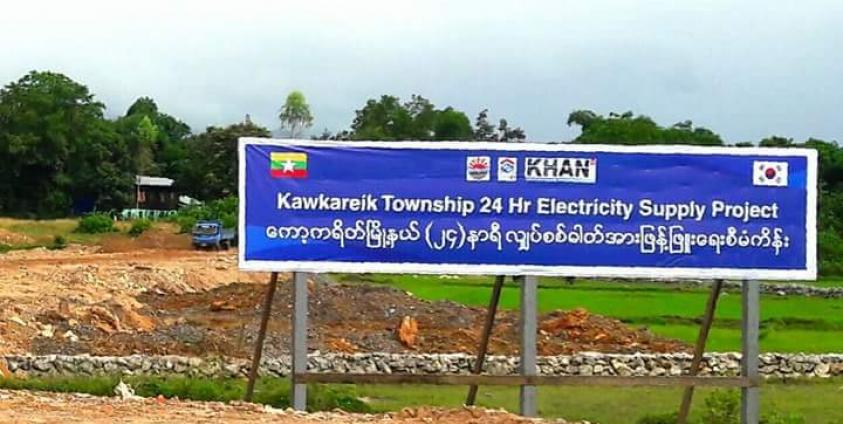Several villages in Kayin (Karen) State may soon be hooked up to the electrical grid once a new sub-station comes online, according to an official from the State Electric Power Enterprise.
“We are trying to distribute power to Myawady, Kawkareik, Kyondoe, Sukali and Waw Lay Myaing from the 230-kV Mawlamyine power station via the Thin Gan Nyi Naung sub-station, which is 95 percent complete. We are trying to provide 24-hour electricity in Myaing Gyi Ngu within this year,” said U Thein Shwe, a deputy chief engineer at the Kayin State Electric Power Enterprise.
Myanmar has among the lowest electrification rates in the world. Less than a third of the population has access to a reliable electricity supply, according to the 2014 census.
Among the 308,000 households in Kayin State, more than 45 percent rely on candlelight – a fire hazard – for light. Less than 30% are connected to the national grid, which currently reaches only centralized villages proximate to power stations – like those Hpa-an, Hlaingbwe, Zar Ta Pyin, Thandaunggyi, Thandaunglay, and Bawkali towns.
U Thein Shwe said that will soon change with the Thin Gan Nyi Naung sub-station. He added that plans are also in place to distribute power to Ka Ma Maung and Hpa-pun via Kaw Lon Island. A planned 33/11 kV sub-station would also distribute power to Kya-in Seikkyi township.
Myanmar generates far less electricity than it needs to meet the demand, especially in the ballooning commercial capital, Yangon.
The energy master plan, drafted in partnership with the Asian Development Bank, envisions 100% electrification by 2030, in part by massively scaling up coal power plants, and connecting homes to the national grid.
In rural villages, only the lucky few have access to electricity through costly diesel generators or solar panels. State media reported in March that one hour of diesel power in rural Myanmar costs almost as much as running electricity for 24-hours in Yangon.
“Everyone is waiting for the government [to provide] electricity,” said U Naing, a resident of Win Yaw from Kya-in Seikkyi Township.
“Our village only receives power from the community electricity generator from 7pm to 9 pm. It is a burden for us since we have to pay K700 per unit. It would help the economic growth in the region if everyone had electricity … and could run small businesses like grinder mills and animal feed processing mills,” he added.
Under the $5.8 billion National Electrification Project (NEP), the World Bank is subsidizing a solar panel project. The Department of Rural Development sold and installed the reduced-cost panels at 11,442 households in five townships in Kayin State last month.
“The state government and [private companies] have signed contracts to carry out projects for increasing power distribution. If the coal-fired power plant is successfully built in Wut Gyi, then electricity can be provided to many factories and workshops,” said U Tin Myo Oo, the State Hluttaw MP from Kya-in Seikkyi township.







